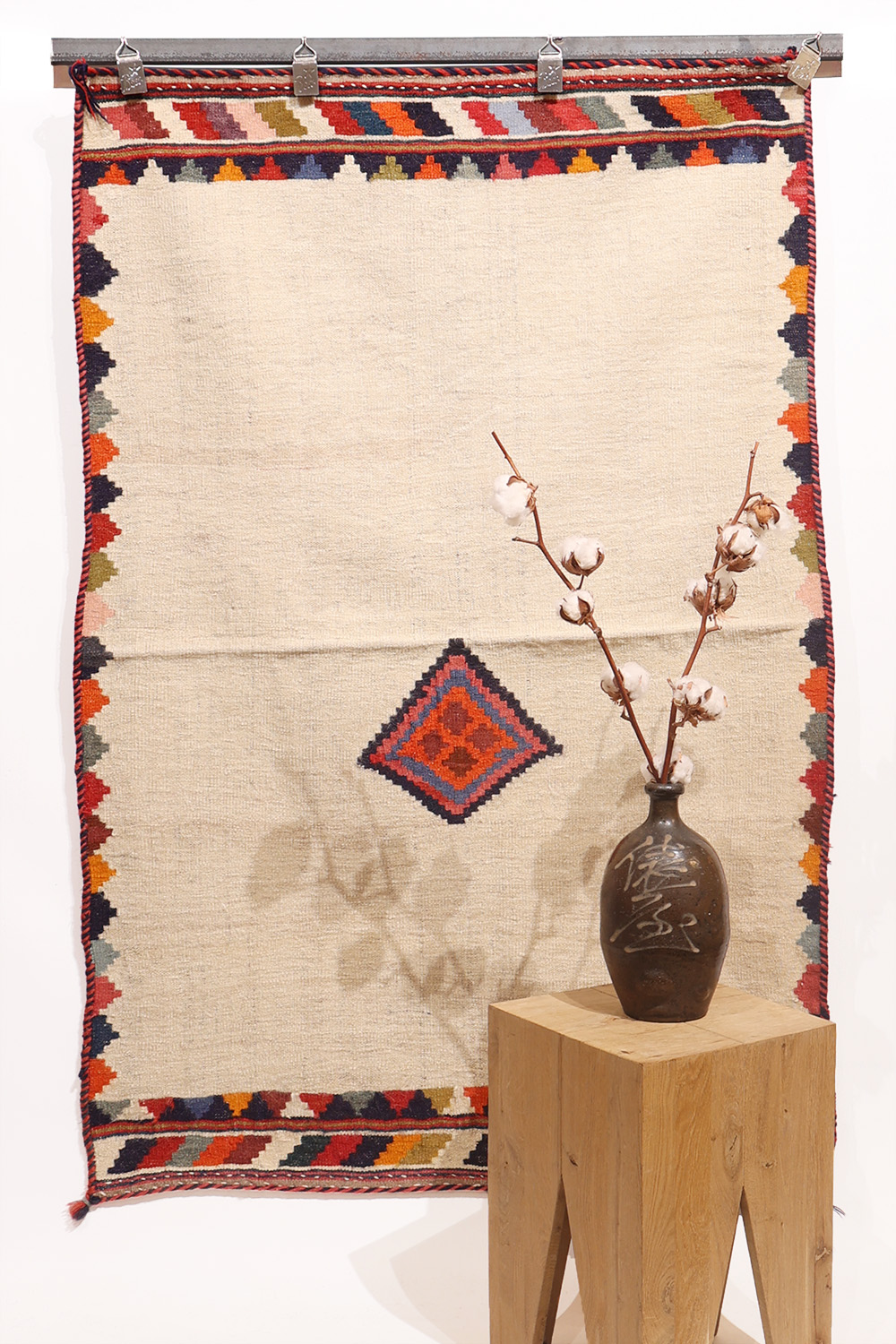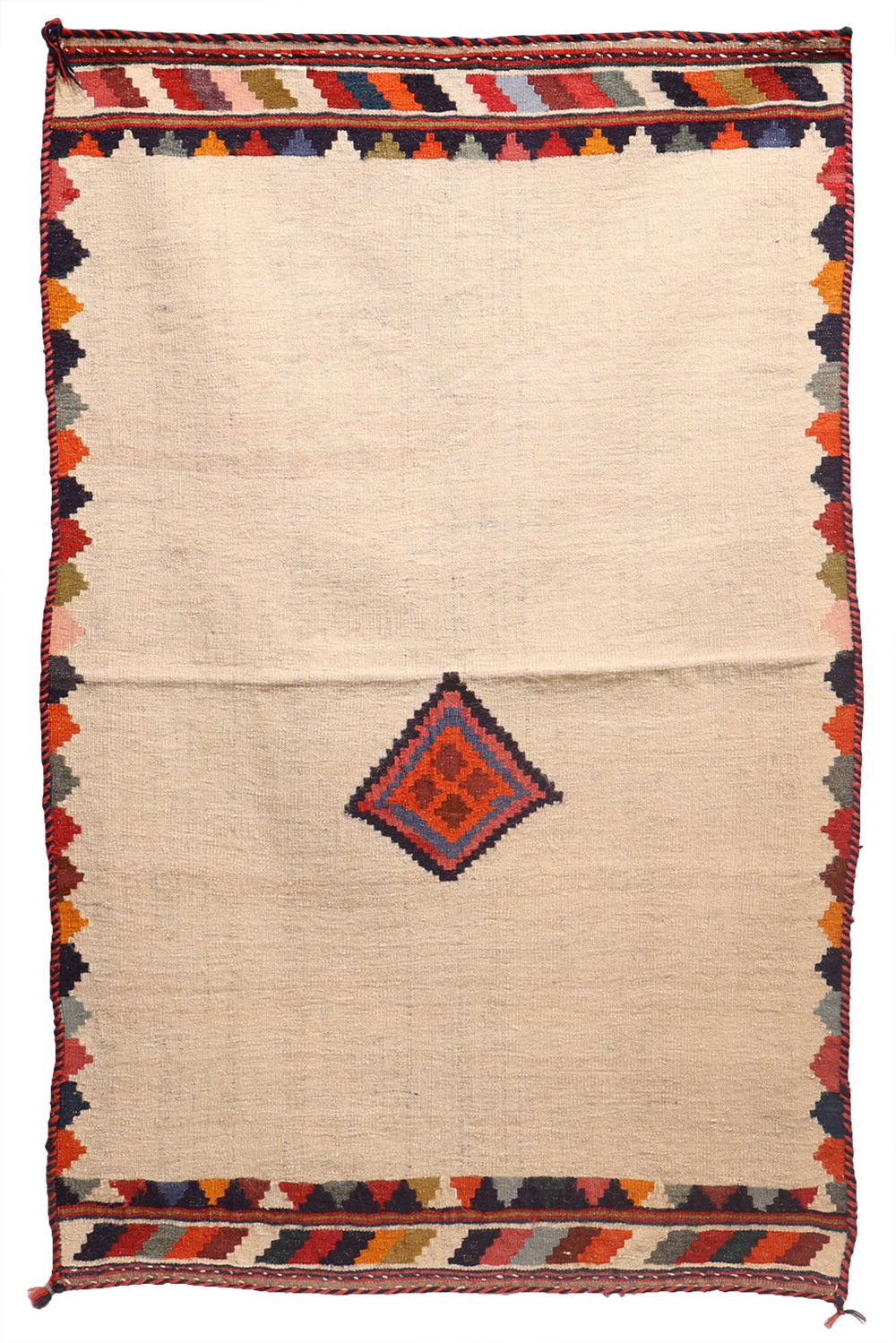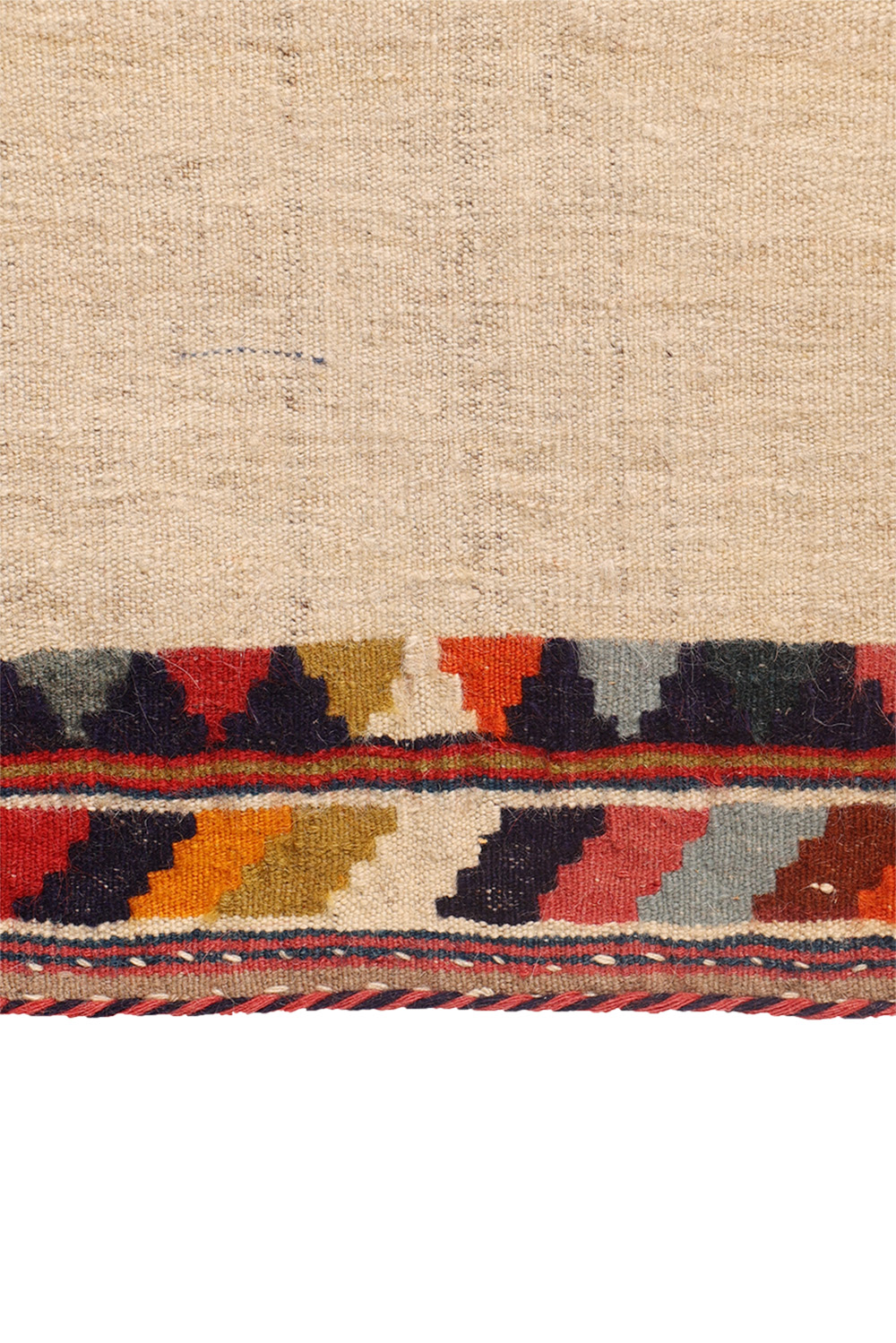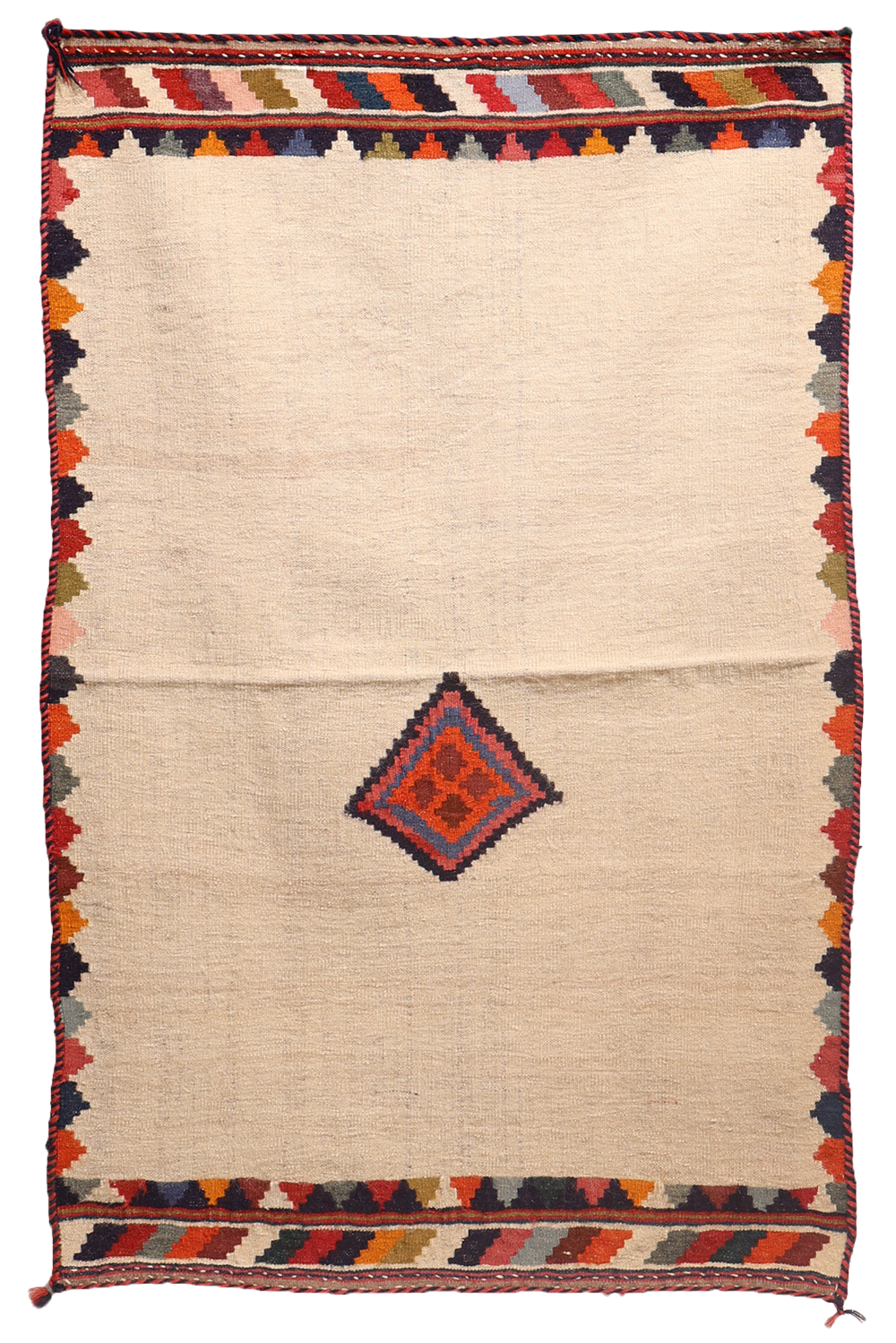475.00 €
A beautiful vintage Qashqai sofreh, or kilim where to make bread, with a lozenge in the central field. The central motif, as can be seen is not simmetrically placed in the centre of the kilim, adding a charming touch to the piece. The colourful border adds another touch of colour framing the whole piece.
Material: 100% hand-spun sheep wool
Size: 148×96 cms
Origin: Qashqai tribe, Iran
Date of weaving: 1970s
Sofrehs take their name from the Farsi (Persian) word for cloth and are used for several functions connected with preparing and eating food. Eating cloths are normally referred to simply as sofrehs and vary enormously in size-from small, rectangular mats for personal use to extremelly long, narrow runners for communal eating. They are woven in several standard techniques, including alternating bands of kilim and pile rug, and produced by a number of nomadic and tribal weavers in Iran, Afghanistan, Central Asia and to a lesser degree, elsewhere.
Turkic-speaking pastoral nomadic tribal groups began entering central and southern Iran during the eleventh and twelfth centuries.The Qashqai, as a large tribal unit, dates back at least to the early eighteenth century, when some Turkish(Turki)-speaking tribal groups in the region existed under the name Qashqai.
Qashqai kilims are best known for their boldness and and freedom in the way the pattern is drawn. An aesthetically pleasing geometry, the fineness of their wool and their clear, strong colours combine to ensure their reputation as superlative examples.
1 in stock
Additional information
| Weight | 2.5 kg |
|---|
Subscribe and receive the lastest news




